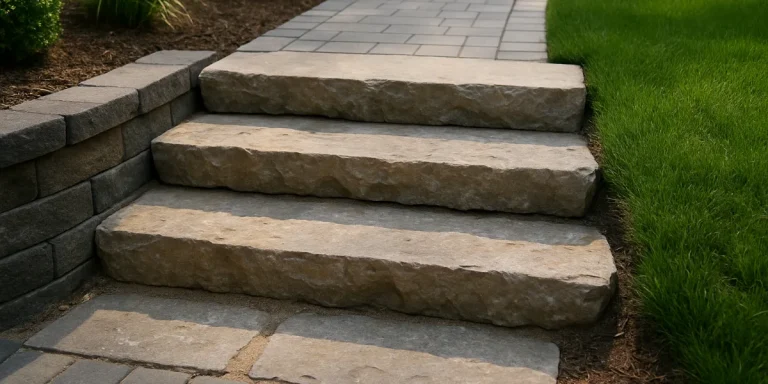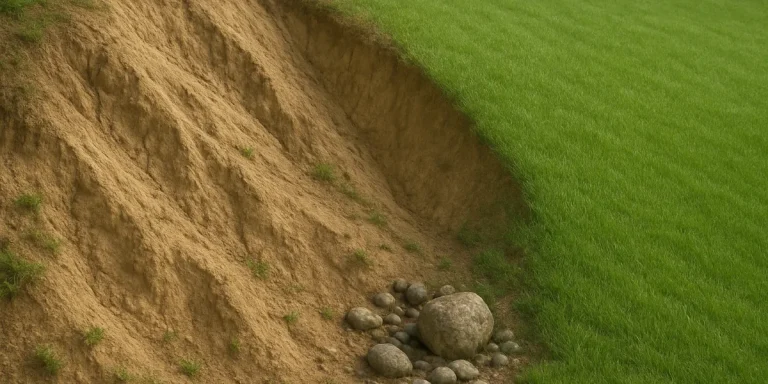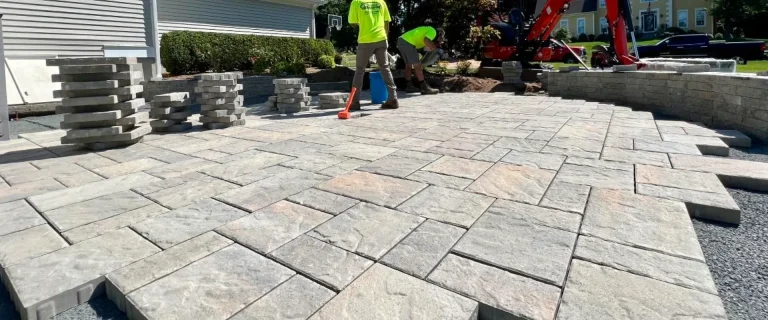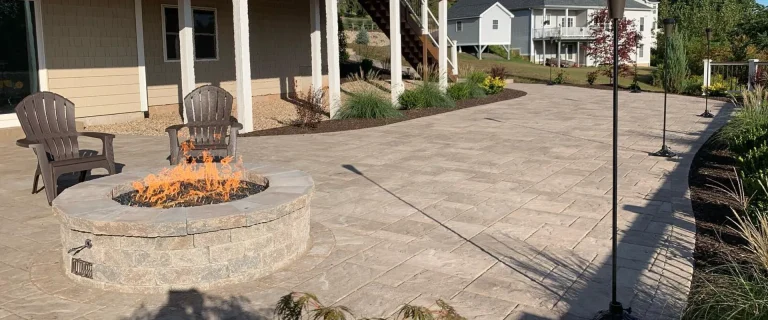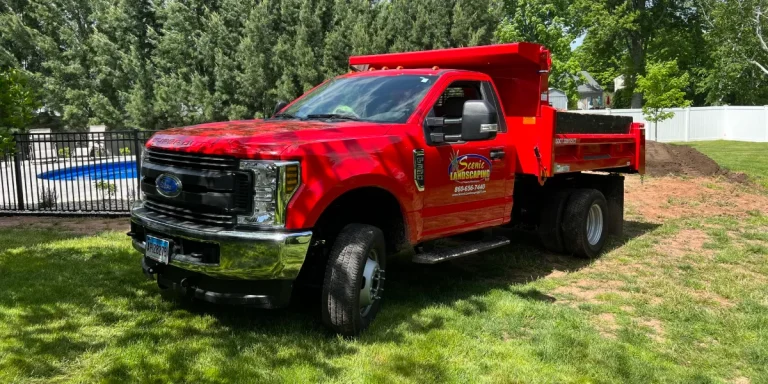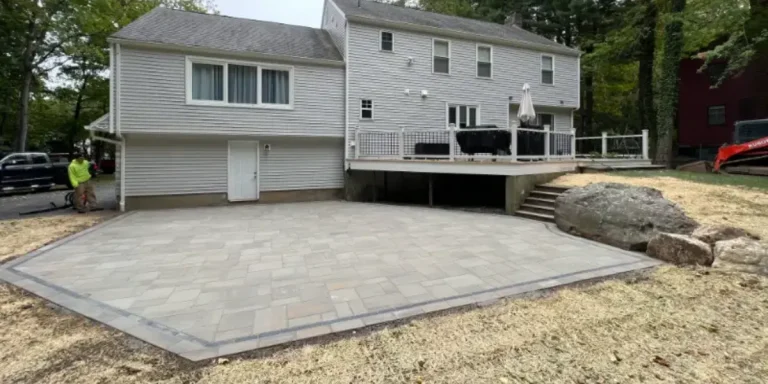Can You Install Pavers Over Concrete?
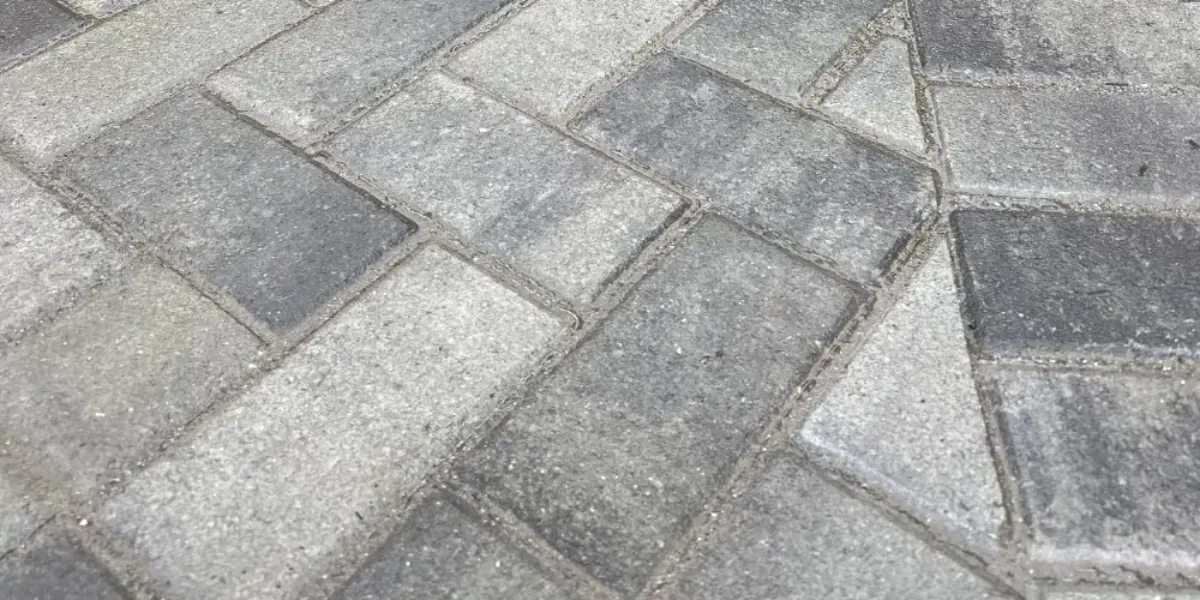
If you have an old concrete patio or walkway that’s seen better days, you might be wondering: Can you install pavers right over it? The answer is yes—in many cases, it’s possible. And when done correctly, it can save time, reduce costs, and give your space a major visual upgrade.
At Scenic Landscaping, we help homeowners in Rocky Hill, Glastonbury, and across Hartford County transform outdated concrete surfaces into beautiful, long-lasting hardscapes using premium paver products. Here's what you need to know.
When it’s possible to install pavers over concrete
Overlaying pavers on top of an existing concrete slab can be a cost-effective and efficient way to upgrade the look of your hardscape—if the conditions are right. This approach eliminates the need for full demolition, shortens project timelines, and reduces material waste. But not every concrete surface is a good candidate.
At Scenic Landscaping, we begin every overlay project with a careful inspection of the existing surface to determine if it meets the standards for a durable and long-lasting paver installation.
You can safely install pavers over concrete when:
-
- The concrete is stable and intact
The slab must be structurally sound. If it’s cracked, sunken, or shifting, those issues will eventually affect the pavers on top. Hairline cracks may be manageable, but major movement means the base is unreliable. - The surface drains properly
Water should flow away from the home and not pool on the surface. Concrete that holds water—or slopes toward the foundation—poses a drainage risk and can lead to long-term damage. In some cases, we can correct mild drainage issues during installation, but severe problems may require removal and regrading. - There’s enough vertical clearance
Adding pavers on top of concrete increases the height of the finished surface. We make sure there’s enough space under doors, steps, siding, or thresholds. If there’s not, we may recommend removing the concrete or adjusting the layout. - It’s a low-load area
Patios, pool decks, walkways, and courtyard spaces are all suitable for overlays, assuming the slab is in good shape. However, driveways or other load-bearing areas typically require a new gravel base to withstand vehicle weight and freeze-thaw cycles in Connecticut’s climate. - Edge restraints can be added securely
Pavers need proper edge containment to prevent shifting. This can be achieved by bonding edge pieces to the concrete or anchoring mechanical edge restraints if the surrounding space allows.
- The concrete is stable and intact
Overlay installations can be a great solution for residential patios, pool surrounds, and garden walkways across Rocky Hill, Glastonbury, and West Hartford—especially when the existing slab is in good condition. By using the concrete as a structural base, we’re able to deliver a durable, attractive upgrade without the cost and disruption of a full demo.
Not sure if your concrete patio or walkway qualifies? Scenic Landscaping offers professional site assessments to help you make the right call. We’ll review the condition, drainage, and elevation before recommending the best course of action.
Benefits of installing pavers over concrete
If your concrete meets the requirements, this installation method offers several advantages:
-
- Faster installation – No need for full demolition or major excavation
- Lower labor costs – Less site prep means reduced project time and expense
- Improved appearance – Pavers provide a high-end finish that instantly elevates your curb appeal
- Better water management – Permeable paver systems or added drainage layers can help direct water away from your home
- Design flexibility – Choose from a wide variety of colors, styles, and patterns to match your home’s architecture
At Scenic Landscaping, we often recommend Belgard pavers for these types of upgrades due to their durability, beauty, and range of style options.
How we install pavers over concrete
Installing pavers over an existing concrete surface may seem straightforward, but it requires precision, planning, and a clear understanding of drainage, material compatibility, and structural stability. At Scenic Landscaping, we follow a tested and proven process that ensures your new paver surface performs beautifully for years—without settling, shifting, or drainage issues.
Here’s how we do it:
1. Inspect the concrete surface
Every successful paver project begins with a thorough assessment of the existing concrete slab. We evaluate:
-
-
- Structural stability – Is the concrete cracked, heaving, or settling? If so, overlaying may not be suitable.
- Surface drainage – We check how water currently drains. Any signs of pooling or slope toward the house are red flags.
- Surface condition – Flaking, scaling, or large expansion joints may require additional prep or reinforcement.
-
If the slab is in good condition, we can proceed with confidence. Otherwise, we’ll recommend full removal and replacement to ensure long-term success.
2. Add a bedding layer
We prepare a thin yet durable bedding layer to create a smooth, level base over the concrete. Depending on the site, we may use:
-
-
- Concrete sand or polymeric bedding sand for dry applications
- Modified gravel blends for improved drainage under permeable systems
- Bonding agents or geotextile fabrics to create separation and minimize shifting
-
This layer ensures proper leveling, cushioning, and adhesion between the old slab and the new pavers.
3. Lay and cut the pavers
Once the base is set, we begin placing your chosen pavers in the desired pattern. This step involves:
-
-
- Carefully aligning the pavers for clean lines and a cohesive finish
- Making precise cuts to fit curves, borders, corners, and architectural features
- Selecting a layout—such as herringbone, running bond, or basketweave—that complements your home and enhances structural integrity
-
At Scenic Landscaping, we typically install Belgard paver systems for their superior quality, color options, and interlocking strength.
4. Install edge restraints and joint material
To prevent your new paver surface from shifting over time, we install edge restraints made of concrete, metal, or high-grade plastic along the perimeter. These keep the pavers locked in place under foot traffic, weather, and ground movement.
We then fill the joints between pavers with:
-
-
- Polymeric sand for non-permeable installations, which hardens and resists weed growth
- Clean, angular gravel for permeable paver systems to allow water to pass through freely
-
Joint material is compacted and swept thoroughly to lock everything in.
5. Address drainage needs
Proper drainage is essential for protecting both your new paver surface and the foundation beneath it. We evaluate the site holistically and incorporate solutions such as:
-
-
- Pop-up emitters to release water away from your home’s foundation
- Downspout extensions or drainage pipes to carry runoff underground
- French drains or dry wells to redirect excess subsurface water
- Swales or grading adjustments to improve water flow across the surface
-
Even when overlaying pavers on concrete, we never compromise on long-term water management. In fact, it’s often where our Certified NDS Drainage Contractor expertise makes the biggest difference.
When it’s better to remove concrete first
Although overlaying pavers can be effective, there are situations where a full tear-out and replacement is the better option.
Consider removing the concrete if:
-
- The slab is cracked, uneven, or unstable
- Water pools or drains toward your foundation
- You’re working on a driveway or high-load area
- You want to lower the overall height for accessibility or aesthetics
In these cases, our team can excavate the existing slab and build a new paver patio, walkway, or driveway from the ground up—ensuring maximum performance and longevity.
A real-world example: Patio upgrade in West Hartford
A recent client in West Hartford had an aging concrete patio that sloped toward their home and looked dated. Instead of demolishing the slab, we evaluated the site and determined it was a strong candidate for an overlay.
Our team:
-
- Corrected the slope with a sloped bedding layer
- Installed Belgard pavers in a herringbone pattern for visual interest
- Added edge restraints and polymeric sand
- Integrated a drainage swale along the outer edge to handle runoff
The result was a refreshed outdoor living space completed in less time—and at lower cost—than a full rebuild.
Why choose Scenic Landscaping?
Whether we’re overlaying an existing slab or starting from scratch, Scenic Landscaping brings the same attention to detail and quality craftsmanship to every hardscaping project. As a Belgard Authorized Contractor, we have the training and expertise to deliver exceptional results that last.
Our hardscaping services include:
-
- Paver patios, walkways, and driveways
- Outdoor kitchens and fire features
- Retaining walls for structural support and design
- Drainage and grading services to protect your investment
We work closely with each client to create custom designs that suit your home, your budget, and your goals.
We proudly serve homeowners in:
-
- Rocky Hill
- Glastonbury
- Wethersfield
- Newington
- Berlin
- Cromwell
- Middletown
- West Hartford
- Greater Hartford County and surrounding areas
Ready to upgrade your concrete surface?
If you’re considering paver installation over concrete, we’d love to help you decide the best approach. Call Scenic Landscaping at (860) 656-7440 or request a consultation online. We proudly serve Rocky Hill and nearby towns with high-quality hardscaping, drainage solutions, and full-service landscape upgrades.

